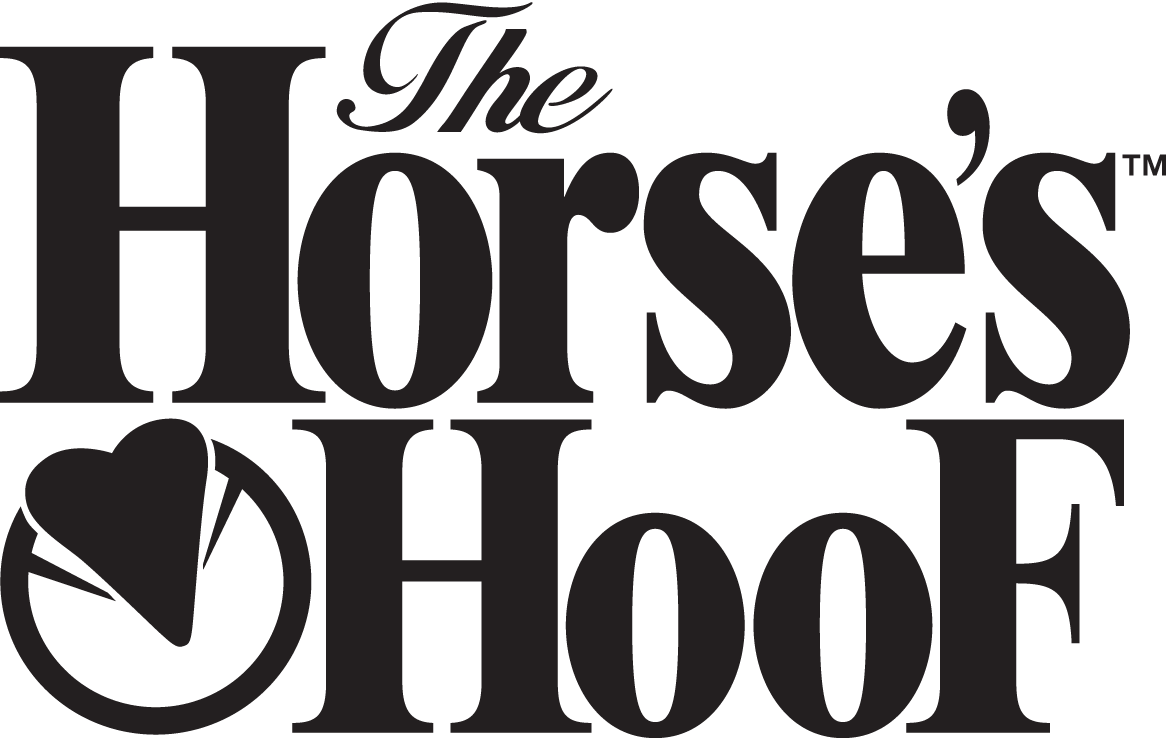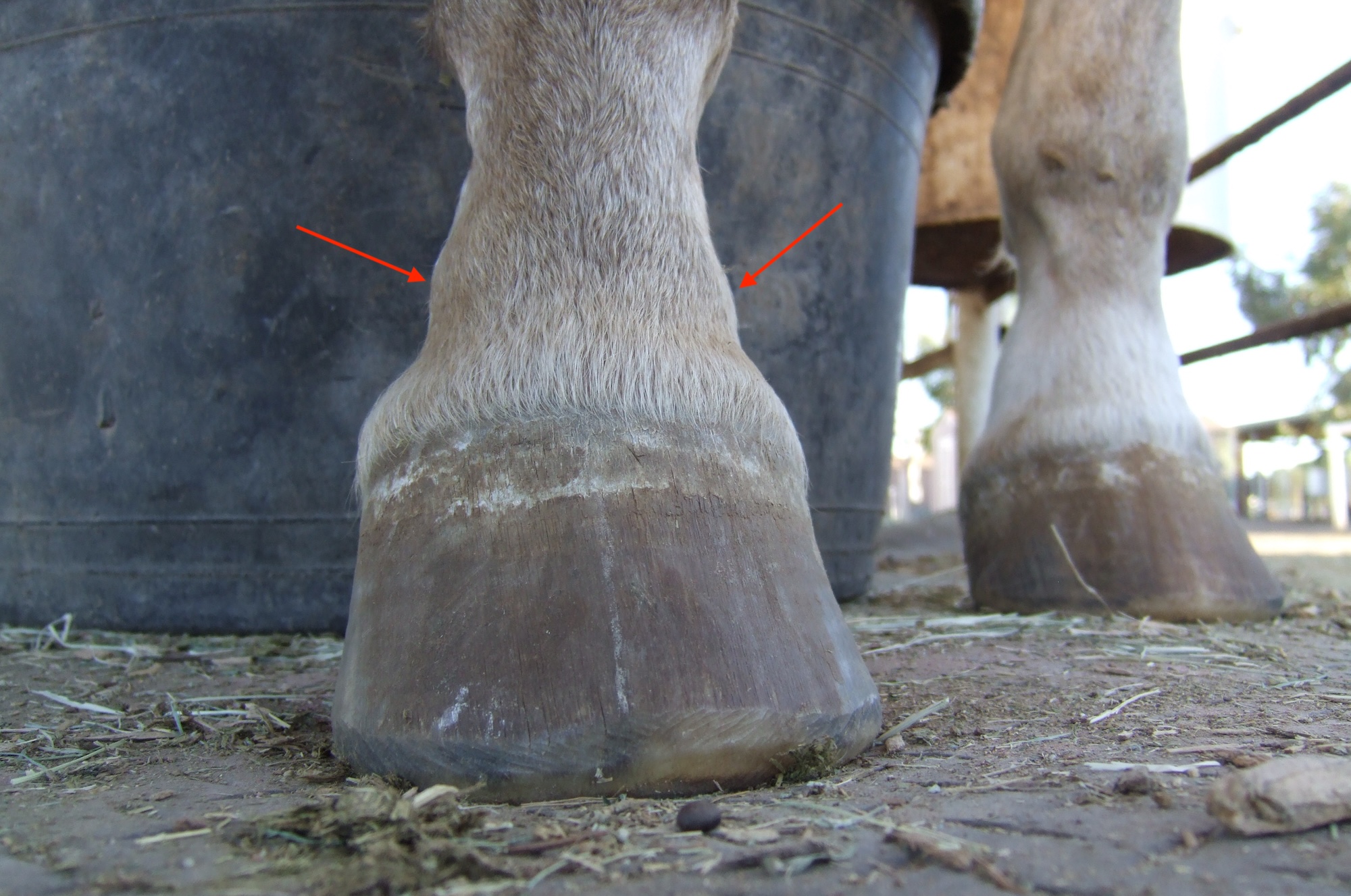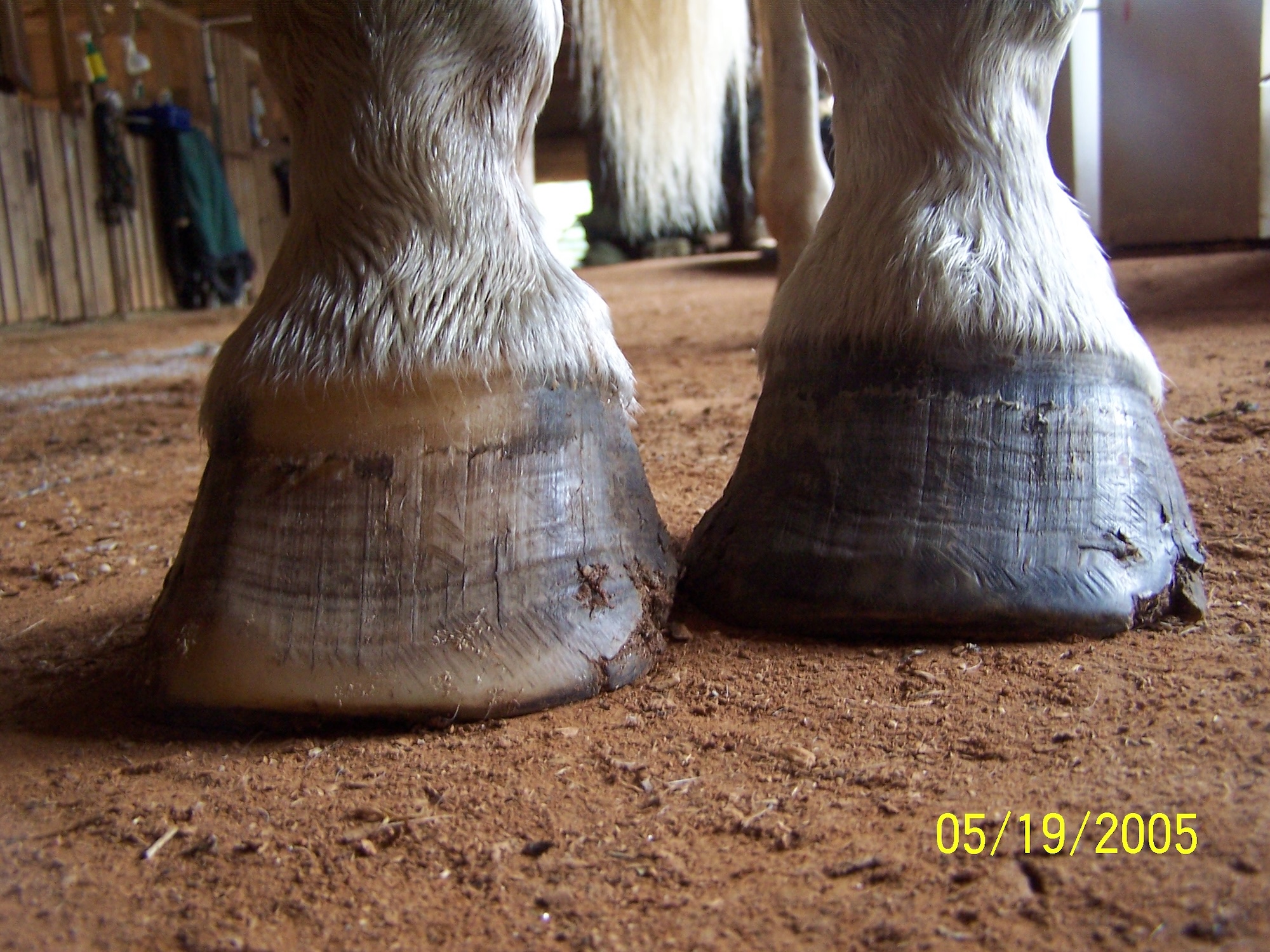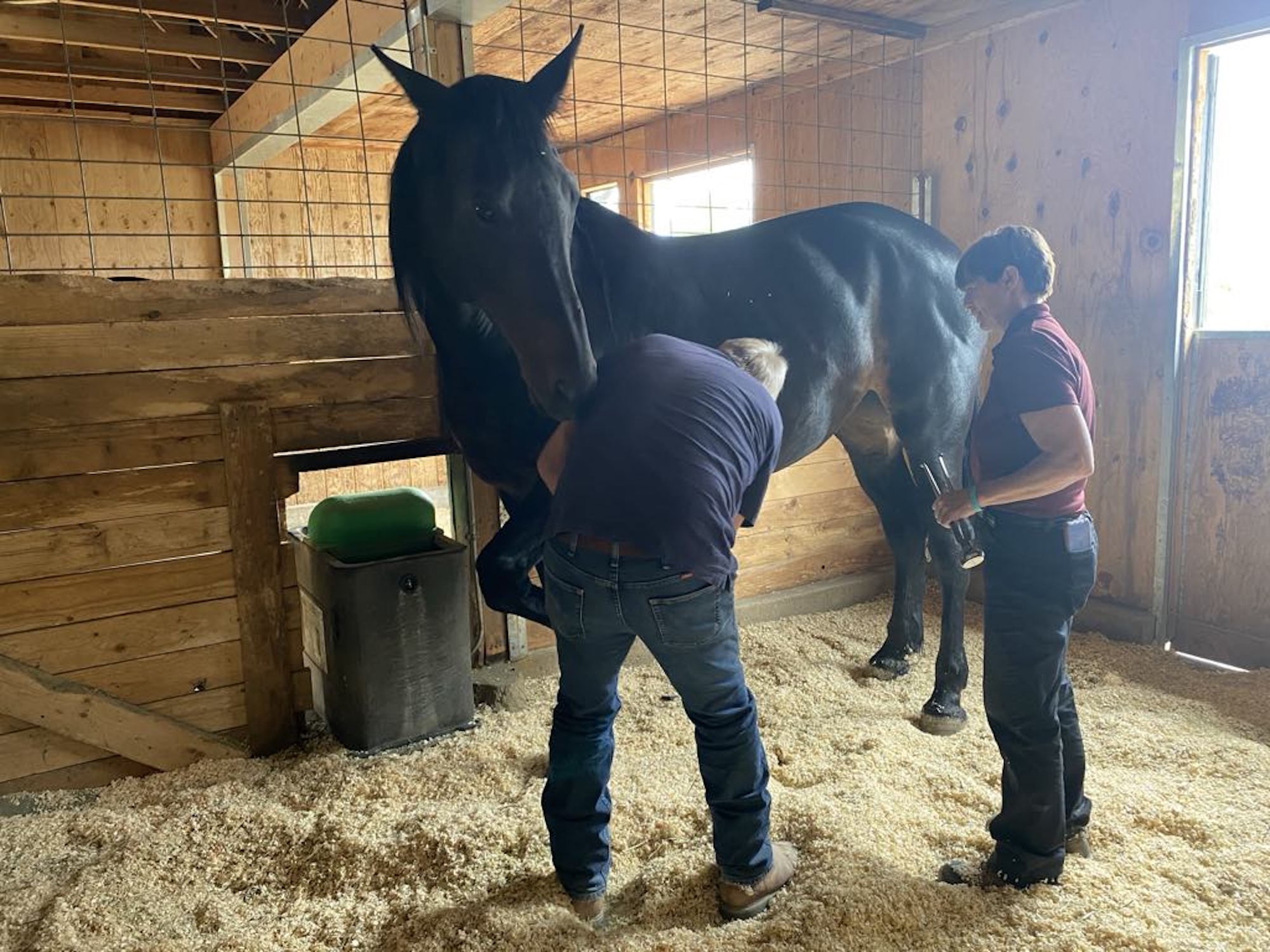Ringbone is the ossification of the horse’s pastern joint and/or coffin joint. Ossification simply means that the body lays down excess bone cells as a result of chronic, repetitive stress to that area. This is also referred to as “osteoarthritis,” or bony arthritis, of the pastern or coffin joints, and is preceded by inflammation within or around the joint. The strained area can also involve the tearing of ligaments away from the bone, which then results in inflammation.
When the pastern joint is involved, the condition is referred to as high ringbone; when the coffin joint is involved, it is called low ringbone. Articular ringbone involves inflammation within the joint itself, with destruction of the articular cartilage. Nonarticular ringbone is the result of ligament tearing. Ringbone may or may not cause severe lameness, and the progression of the disease can vary. Eventually the excess bone can grow excessively enough to impair movement, or can fuse the joint together entirely.

This Quarter Horse clearly shows ringbone, as evidenced by the hard bony swellings around the sides of the pastern. Despite the fairly severe amount of excess bone material, with correct natural care and regular exercise, this horse is very comfortable and sound.
What causes ringbone?
Typical reasons suggested for the development of ringbone include poor conformation or posture (such as toeing-in or toeing-out, base narrow or base wide), imbalanced shoeing or trimming, working on hard ground, OCD (osteochondritis dissecans) in young horses, and blunt trauma to the joint. James Rooney, DVM even observed a possible congenital or genetic cause for articular ringbone.
From the holistic perspective, the most common cause of ringbone is probably the impaired shock absorption resulting from horseshoes. However, barefoot horses can also suffer from ringbone if they have contracted hooves or high heels, both of which greatly impair natural shock absorption. Conformational problems coupled with the lack of an adequate natural lifestyle will also contribute to a particular horse’s likelihood of developing ringbone.
How is ringbone diagnosed?
Ringbone is usually diagnosed through x-rays and nerve blocks. However, a horse is often the most lame early in the development of ringbone, when the joint has inflammation, and there is little to detect on x-rays at that time. Visually, severe ringbone can sometimes be seen as hard lumps on the sides of the pastern area (high ringbone) or right above the coronary band (low ringbone).
Curiously, vets note that lameness does not seem to correspond with the bony changes shown on x-rays! Often horses with lots of excess bone material are sound, and vice versa. We understand this is because the excess bone is not the actual cause of the problem, but rather the symptom, so lameness is probably coming from a much more complex set of variables than simply the ringbone itself. Unfortunately, the vast majority of domestic horses suffer from pathological hooves, which eventually results in lameness.
What are the conventional treatments for ringbone?
The treatment of ringbone usually involves joint injections, such as corticosteroids and hyaluronic acid, to reduce inflammation of the affected joint. In addition, shots of intravenous hyaluronic acid and a program of oral joint supplementation are usually advised. There seems to be very conflicting veterinary advice regarding the horse’s movement: ranging from daily exercise and full turn out, all the way to total stall rest as the absolute requirement for the early stages of ringbone.
Every case is different, but we’ve seen the comfortable recovery of multiple cases of horses with ringbone, without the use of injections, and without any stall rest. Lack of movement is contrary to the nature of the horse, and is not conducive to healing. As Dr. Hiltrud Strasser and Sabine Kells write, “…bone yields quickly to pressure, and a sufficient amount of movement will cause the ossifications in the way of normal movement to be removed. If ossifications are not in the way of movement, they will remain, but not as a source of discomfort.”
What are the natural and alternative solutions for ringbone?
The solution for both prevention and resolution of ringbone is pretty simple when you think about the root cause of the problem. Ringbone happens due to repetitive stress; anything that provides greater shock absorption for the horse’s feet will also help alleviate ringbone. Bare hooves have far greater shock absorption than shod hooves; therefore a barefoot hoof care program should be embraced.
Basic recommendations for horses with ringbone are the same as those for improving the health of any horse: 1) healthy bare hooves trimmed in good balance, and 2) a good lifestyle with plenty of exercise.
Trimming: For horses with ringbone, minimizing concussion will be a priority. This begins with trimming the hooves in a way that greatly minimizes “peripheral loading”. Peripheral loading (which is defined as the wall bearing most of the weight of the horse) has been observed by Dr. Robert Bowker to greatly reduce blood flow and shock absorption within the hoof. Trimming to minimize peripheral loading means a short toe (with a very short breakover), a low heel with the frog on the ground, and the outer hoof wall greatly relieved by a generous mustang roll applied to the bottom edge of the hoof from heel to toe – all achieved a bit gradually if the horse’s hooves are overgrown or unhealthy. Horses with ringbone are likely to be quite out of balance, with hooves that are crooked or uneven, so seek expert guidance and advice from an experienced hoof care professional.
Lifestyle: Horses with ringbone (like all horses!) should live out 24/7 in a herd with plenty of room to move freely. If that situation is not possible, the owner should simply try to achieve the best lifestyle she can for her horse. The better the living situation, the better the results will be. The very best remedy for ringbone is motion, and the horse should be exercised daily to whatever degree he is capable. If the horse is lame at the trot, but sound at the walk, then ride or exercise at the walk. Stick to soft ground, or use hoof boots with thick foam padding inside to minimize the concussion. Provide some areas of pea gravel in the horse’s living area to allow him to position his hooves comfortably, as pea gravel can help increase blood flow to the hoof. Any “stall-rest” for a horse with any type of arthritis will be extremely detrimental!


Pea gravel is highly recommended for horses with joint problems, or with any discomfort in the lower limbs or hooves. This footing allows the horse to position himself as needed to provide relief. Pea gravel should never be the only footing available; instead, a variety of terrain should be provided, so the horse can choose what is most comfortable.
Pain management: Depending on the stage of development, a horse with ringbone might be in severe pain. This pain could be managed carefully with small doses of anti-inflammatory medication (NSAIDS) but these medicines do have significant detrimental [or counterproductive?]side effects. We personally try to reserve the use of NSAIDS for only very severe situations.
For mild discomfort, the inflammation of ringbone might be best managed through the use of anti-inflammatory herbs, especially yucca and devil’s claw. There are many herbal blends now available for pain relief and support. Essential oils such as lavender or rosemary, rubbed into the affected area, can help reduce pain. A highly nutritious diet, with plenty of vitamins and antioxidants, is a must, of course. It is worth trying MSM, and/or other joint supplements to see if your horse responds positively. Acupressure, acupuncture, laser therapy, massage therapy and other types of body work can be extremely helpful in stimulating the horse’s healing.
Homeopathy can be an extremely useful tool, and not just for pain relief. For best results, work with an equine homeopath who can choose the remedy that most closely matches your unique horse. There are many remedies that can be tried for pain relief, starting with Arnica. For ringbone and similar arthritic conditions where the horse finds a reduction of pain symptoms through movement, the remedy Rhus tox is well indicated. There are homeopathic ointments available that combine Arnica, Rhus tox, and Ruta grav; these can be applied directly to the affected area externally for additional relief.
To help with the excess bone condition itself, the remedy Calc fluor is indicated for bony distortion of the joints. George Macleod writes about Calc fluor, “This is a wonderful, frequently used, bone remedy. Any patient with bony growths, or ‘exostoses’ may benefit.” Also, the remedy Hekla lava has been used successfully to treat ringbone since the 1800’s—long before there were any drugs even available for this condition.
While the excess bone formations will probably not disappear entirely, a horse with ringbone can still live a sound and comfortable long life if provided with a healthy lifestyle and balanced bare hooves. Every horse is a unique individual, but most will respond positively to this basic program.
References:
The Lame Horse by James R. Rooney, DVM
The Hoofcare Specialist’s Handbook: Hoof Orthopedics and Holistic Lameness Rehabilitation by Hiltrud Strasser, DVM & Sabine Kells
The Treatment of Horses by Homeopathy by George Macleod, MRCVS, DVSM
Complete Holistic Care and Healing for Horses by Mary L. Brennan, DVM
by Yvonne Welz, published in NATURAL HORSE Magazine – VOLUME 13 ISSUE 1, Jan/Feb/Mar 2011
See the full content listing of all issues of The Horse’s Hoof Magazine! We also provide instructions on how to read the issues for free on Hoof Help Online.
For a detailed listing of all articles on The Horse’s Hoof website, please visit our Article Directory.




